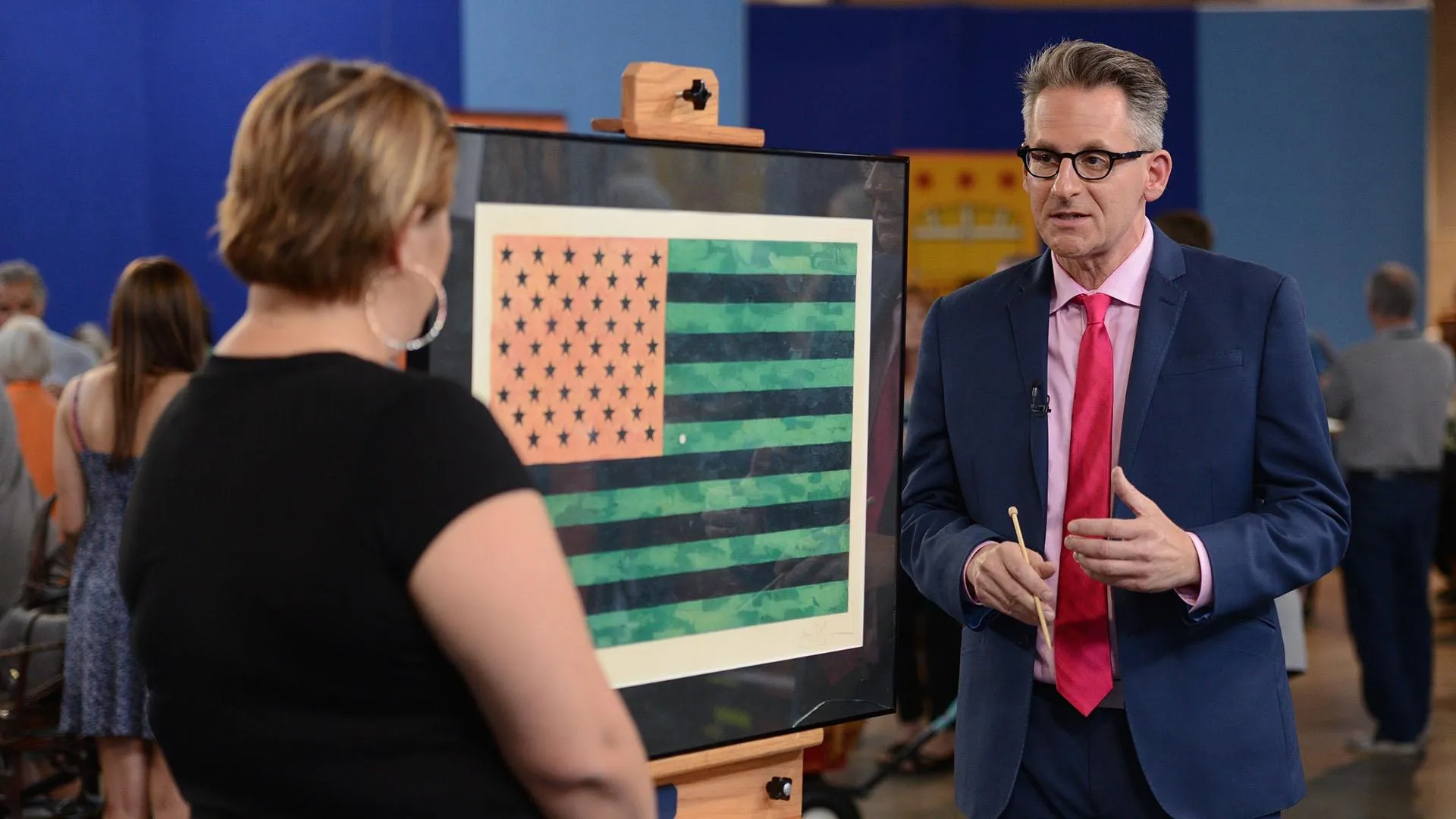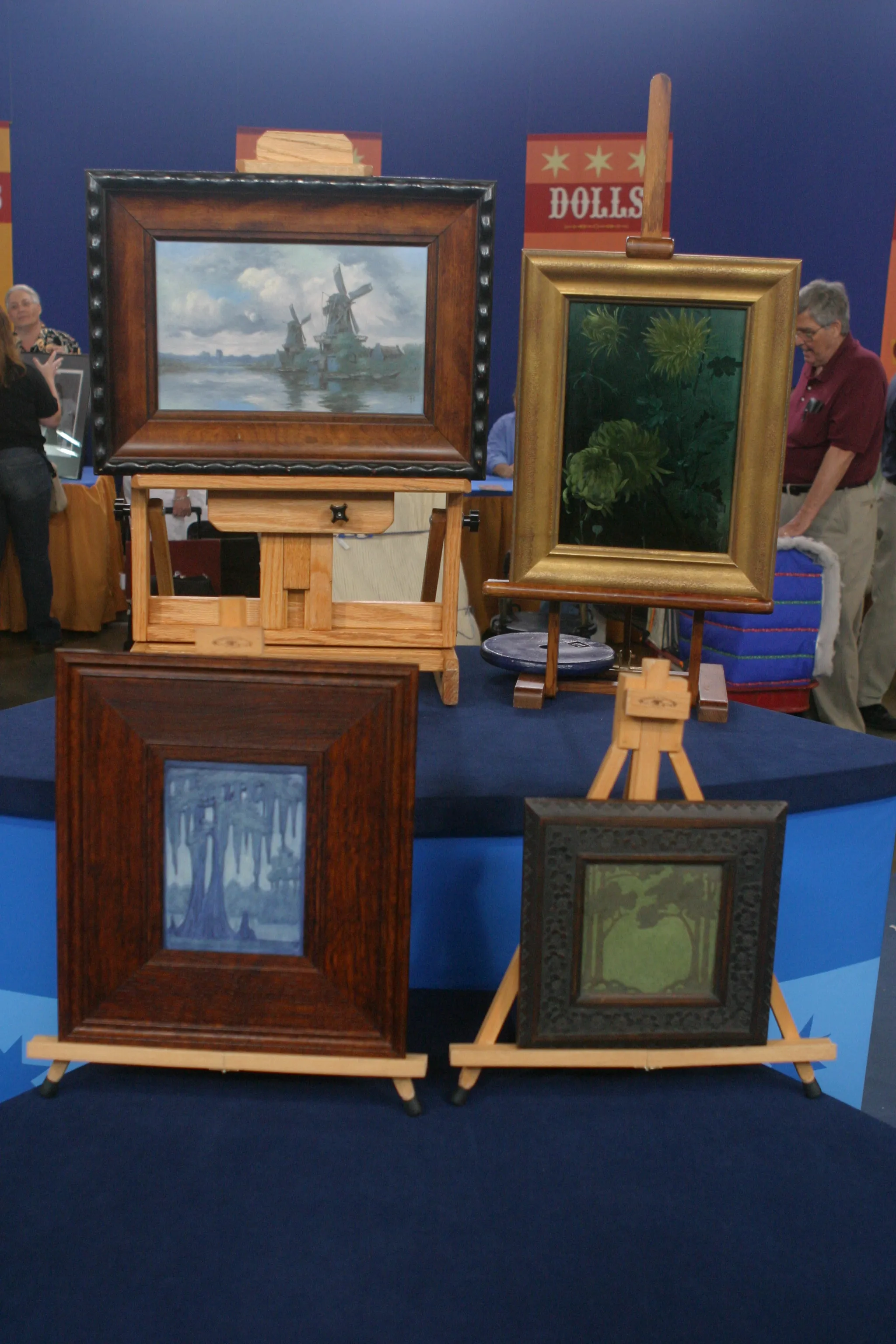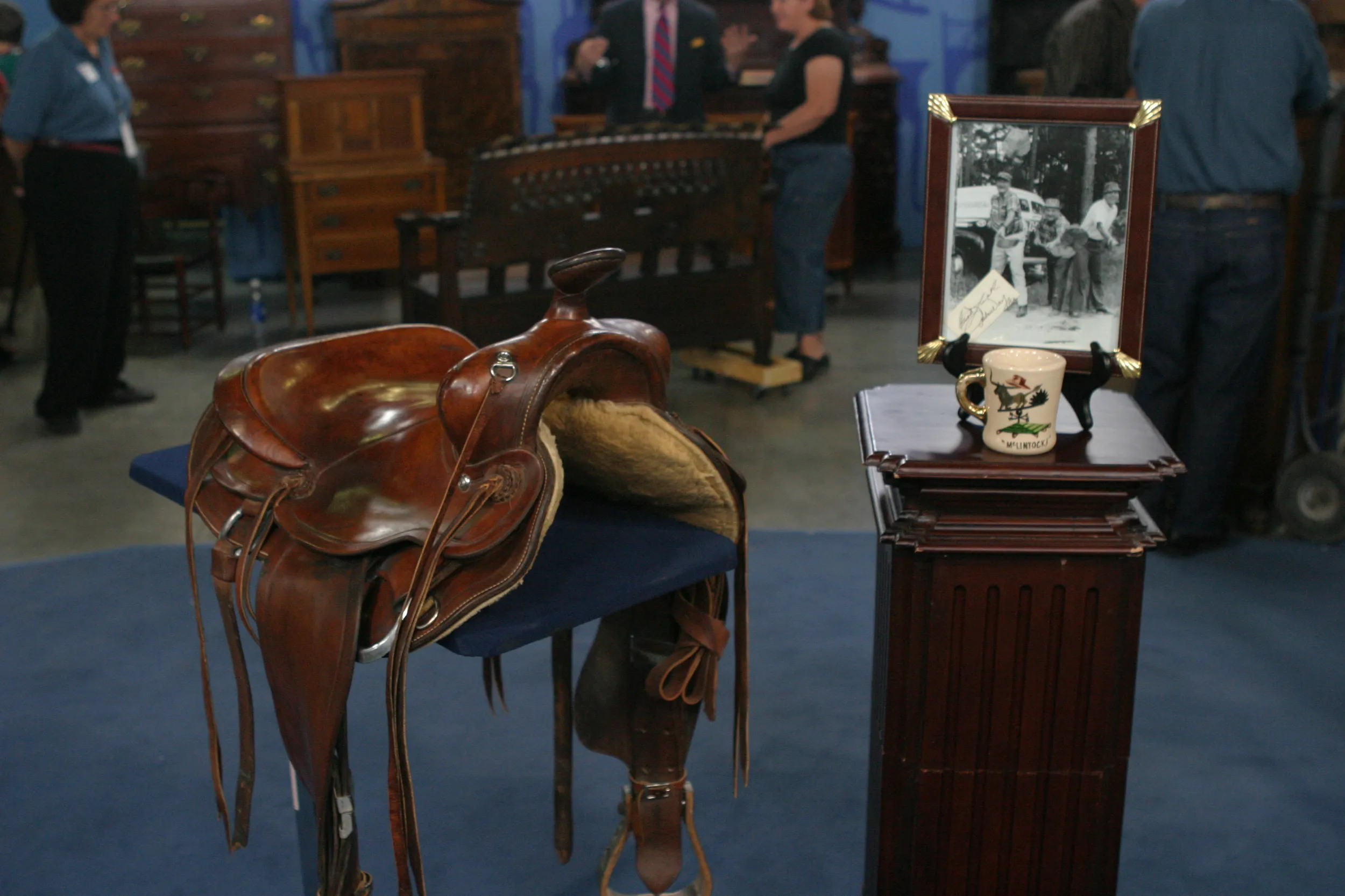APPRAISER: When you brought this in, you told me that you had a choice between bringing in this or one other object. What was the other object?
GUEST: We had two paintings that I had inherited from my grandmothers, and this was actually going to stay in the car because it was big and clunky, so...
APPRAISER: What kind of compelled you to bring this one in instead? What do you like about it?
GUEST: Well, I mean, it has meaning to me. When I was growing up with it, I remember that we would look at the circle in the middle and you'd blur your eyes for a minute and then you'd look up and it would have the flag in red, white, and blue. And it hung in our home. I grew up in Florida. My parents moved to New Mexico in '91. It went in the garage, it's been there ever since. My husband and I recently bought our first home, and they gave this to us to hang in our home.
APPRAISER: You know who the artist is.
GUEST:I know that it's signed by Jasper Johns.
APPRAISER: And in addition to being signed by Jasper Johns, it's numbered, and we see here that it's an edition of 300. So this is a print, and it is essentially a mechanical reproduction of a painting. Flags along with targets were one of the images that was a real source of inspiration for Jasper Johns, who was a real seminal figure in 20th century American art. And the flag theme he has said to have thought of in a dream. He started doing the flags roughly in the mid-'50s. This print was done in 1969 as a real anti-war statement of what was going on in Vietnam. At the time, Jasper Johns' dealer, the famous dealer Leo Castelli, commissioned Jasper Johns to make this print in commemoration of the Moratorium, which was really a series of marches going on in the fall of 1969 across the U.S. An outfit called the Committee Against the War in Vietnam published this print in the edition of 300. There's also an edition that has typeset on the bottom that says "Moratorium," and "Flag (Moratorium)" is what this is called.
GUEST: Oh, wow.
APPRAISER: The orange is said to have had a connection, a statement against Agent Orange being used in the war. The green has a tie-in to the fatigues used by the soldiers. This represents a bullet hole, and that is an optical illusion. Jasper Johns was really one of the great minimalists. He was a figure who foretold what was going to be going on in pop art. And it's an interesting print. It's iconic and something that people remember from the late '60s.
GUEST: It's interesting to hear that story because my parents were total hippies.
APPRAISER: Oh, were they?
GUEST: Total hippies, and this was gifted to them in the '70s, and I didn't know the story, so it makes a lot of sense in terms of actually having that meaning. It resonates with the story.
APPRAISER: Well, he was a relatively young man when this was produced. He was born in 1930. But it's interesting that as a mechanical print, because it's signed and numbered, in today's market at auction, this print has a value of $10,000 to $15,000.
GUEST: What? And it's funny because my parents this morning were saying, "Don't bring it, it's worth nothing, it's damaged."
APPRAISER: I'm glad you didn't listen to them.
GUEST: It was going to totally stay in the car. That's crazy.









